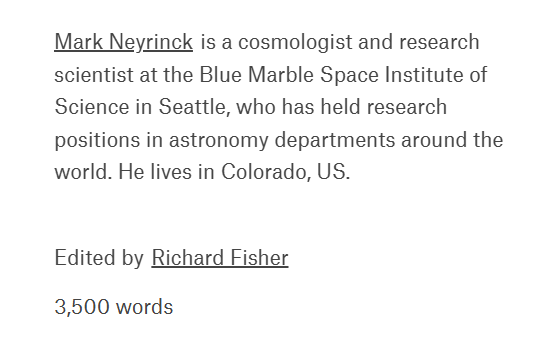Welcome to DU!
The truly grassroots left-of-center political community where regular people, not algorithms, drive the discussions and set the standards.
Join the community:
Create a free account
Support DU (and get rid of ads!):
Become a Star Member
Latest Breaking News
Editorials & Other Articles
General Discussion
The DU Lounge
All Forums
Issue Forums
Culture Forums
Alliance Forums
Region Forums
Support Forums
Help & Search
The DU Lounge
Related: Culture Forums, Support ForumsRivers of galaxies

What is the shape of the Universe? The answer might be found in the most unassuming places here on Earth
https://aeon.co/essays/how-to-see-the-cosmic-web-here-on-earth

Artist simulation of the cosmic web. Courtesy Volker Springel (Max Planck Institute for Astrophysics) et al

The most familiar celestial objects, like Earth, the Moon and the Sun, are spheres. The solar system’s planets have orbits that are roughly circular, and zooming out a hundred-millionfold, the Milky Way is a flattened disk. But zooming out by a further factor of 1,000 from the Milky Way, to encompass our nearest non-satellite galaxy Andromeda, and dozens of others, the shapes look different. The arrangement may look haphazard, but it’s ordered in its own way, in a network of filaments with vast walls and voids between them, called the cosmic web. This structure started forming at the Big Bang, after which slight density variations amplified to a massive scale. It’s still evolving today, with a fractal geometry characterised more by branching flows than orbits.
Despite its astonishing size, the cosmic web is relatable to everyday experience, with surprising connections to similar systems and patterns on Earth, such as the shapes that light makes as it scatters at the base of a swimming pool, or the growth of bubbles. For researchers, such Earth-based analogies can provide a simpler, tangible and even experimentally observable way to understand the Universe’s complex three-dimensional structure.
Other analogies are less scientifically developed, but enlightening in different ways. For example, I am currently working on the idea that the cosmic web evolves via ‘intergalactic rainstorms’, akin to the way rainfall flows into river networks on Earth. There are also other analogous processes that I believe most cosmic web researchers would not dispute. As well as river networks with their branching tributaries, the cosmic web echoes spider webs, transport networks, mycelia, and even respiratory networks and neurons in human bodies. When I contemplate how – and why – the cosmic web’s shape and evolution is echoed down here on Earth, I find meditative and even spiritual value. Even though I have been studying this enormous structure for years, it still evokes awe and curiosity to encounter striking similarities across scales and systems.
In the visualisation below, you can get a sense of what the cosmic web looks like. On the right, we can see galaxies roughly as they might appear in the sky, if the pesky stars in our own galaxy didn’t get in the way and our eyes were more powerful. The middle panel, with yellow nodes (large galaxies) and strand-like green filaments, illustrates how the rest of the matter would appear if it all emitted light. And on the left is a view of how these structures were assembled over billions of years, with tracks of matter flows leading into galaxies and the filaments between them.

From a visualisation of the cosmic web by Miguel A Aragón-Calvo, Julieta Aguilera and Mark SubbaRao/John Hopkins University
snip
1 replies
 = new reply since forum marked as read
Highlight:
NoneDon't highlight anything
5 newestHighlight 5 most recent replies
= new reply since forum marked as read
Highlight:
NoneDon't highlight anything
5 newestHighlight 5 most recent replies
Rivers of galaxies (Original Post)
Celerity
Thursday
OP
Metaphorical
(2,482 posts)1. Networks
I study networks and systems theory, both in computer science (especially AI) and in physical systems. Any time that you have interactions of sufficient strength, you see networks emerge that characterise fractal systems within a surprisingly narrow range of dimensions. The first time I saw a visualization of Laniakea, I thought "this is a cosmic watershed". You see it in the brain, in vascular systems in language latent spaces, in trees and tree roots. The universe is chaotic, but it is very far from being random.